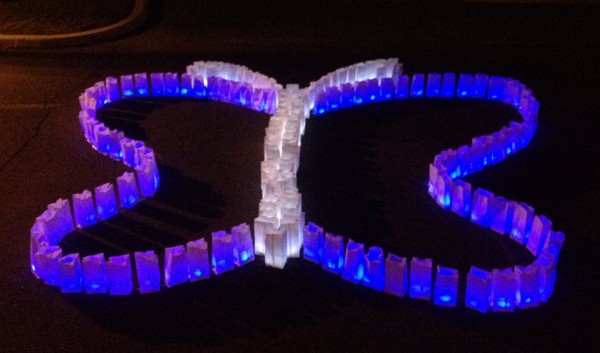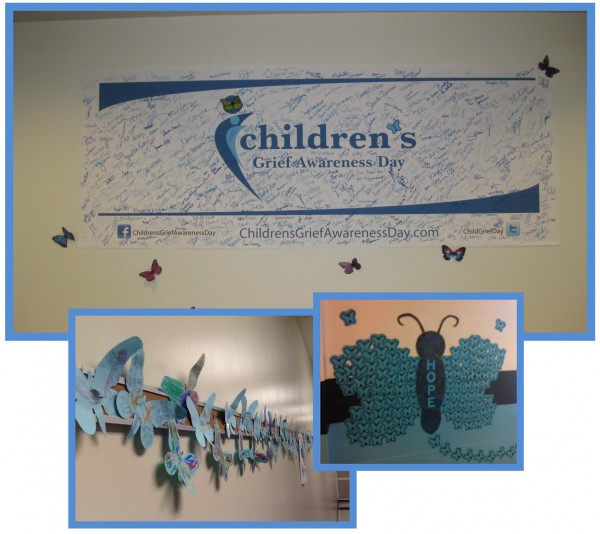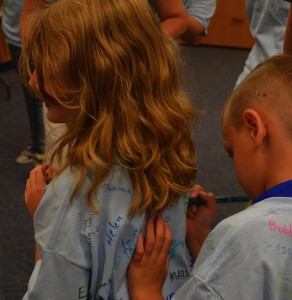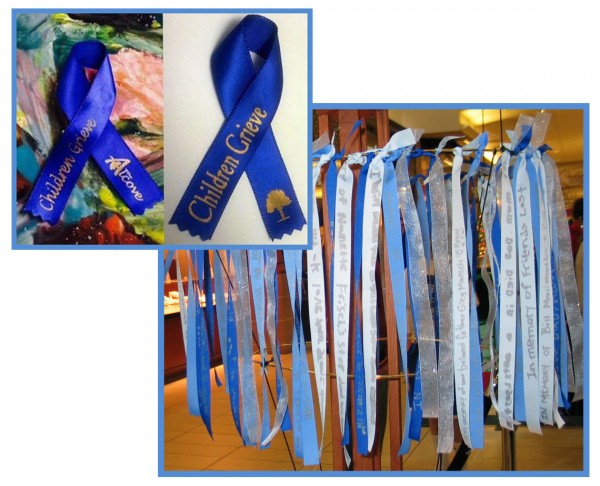Editor's Update: This article was first published November 16, 2014. It was most recently reviewed and updated November 3, 2023, including adding a link to a 2022 video created for Children's Grief Awareness Day.
Children’s Grief Awareness Day, observed throughout the nation and in countries around the world, was begun by the Highmark Caring Place right here in Pennsylvania in 2008.
This day provides an opportunity to raise awareness of the painful impact that the death of a loved one has in the life of a child, and an opportunity to make sure that these children receive the support they need. Held on the third Thursday of November, each year it grows larger and larger.
Although the topic of death and grief can certainly be poignant, observing and participating in Children’s Grief Awareness Day doesn’t have to be a somber occasion. No matter what you do, your actions will carry the meaning of support to kids who have had a loved one die. Every year thousands of people find creative ways to raise awareness of the impact of death on children and to let grieving children know they are not alone. Many of these ways revolve around two concepts:

Luminaries are one way to observe Children’s Grief Awareness Day. Memories, messages, drawings, and expressions of love and honoring are written on white paper bags. Blue and white candles (or LED lights) are placed within the bags, and the illuminated bags are then placed in the shape of a butterfly, radiating Hope for all to see.
The easiest way to participate in Children’s Grief Awareness Day is to wear blue on that day. In a way, kids who have experienced a death are wearing “blue” every day; they’re living the blues.
When we choose to wear blue in solidarity with them; when we acknowledge what they’re going through and elect to stand with them; when we choose to “put on the blues,” even if only on the outside, as a way of making a statement to the world that we won’t let their hurting go unnoticed — we help these kids see that they’re not alone in what they’re going through.
Blue is also the color of trust, honesty and loyalty, creating a sense of calmness and peace, and often reflecting and enhancing a person’s innate desire to help and befriend a person in need. Wearing blue, then, is also a statement of the willingness to lend a helping hand, to be there for the friend in need.
In addition to wearing blue, businesses or organizations can have a “blue out” in their offices or cubicles, and schools can encourage their entire student body to wear blue that day.
As the butterfly is the universal symbol of hope, of a new life growing out of the old, “HOPE the Butterfly” symbolizes the message of HOPE that we are sharing with grieving children on this day and throughout the year — the hope that it won’t always hurt so badly; and the hope that these kids can hold on to as we let them know that there are many of us out there “Holding on to HOPE” for them so that they know that they are not alone.
You can learn more about Children’s Grief Awareness Day by visiting the Highmark Caring Place resource page, which includes videos, activity worksheets and more from the past several years.
There are also many other ways to be a part of Children’s Grief Awareness Day:

A Wall of Hope can be created out of paper butterflies, leaves, or hearts on which people can write the names of loved ones, or messages of support. These can then be attached to banners, posters, bulletin boards, blank walls, or even hung on small “trees” in the manner of ornaments.
The “How to Participate” section of the Children’s Grief Awareness Day website has additional suggestions on how to join in observing the day.
Also consider publicizing your activity. By explaining the reason behind your activity — to show awareness of grieving children — you help to tell the entire community what Children’s Grief Awareness Day is about.
Children who have suffered the death of someone close have been wounded inside.

T-shirts with the name or names of loved ones written on them can be worn in memory of those we love. Others can sign the shirts in a show of support.
The damage is devastating, but it is internal. Unlike a classmate with a broken leg, the injury that comes with grieving is hidden from view. The kid who lost a loved one looks the same as they did a month ago (or a year ago, or however long it’s been since their person died).
This becomes a compound problem:
By raising awareness of the struggles that children and teens face following the death of a loved one, we can help these kids get the help and support that they need — but sometimes don’t get — because their pain isn’t always obvious or understood.

Ribbons can be created for people to wear in solidarity with grieving children, or lengths of ribbon can be available for anyone to write their messages of memory, support, love or hope on them.
Let’s all find a way to bring BLUE and HOPE to Children’s Grief Awareness Day. Let’s do it for the kids — and let’s find ways all year round to let them know they are not alone and that we care.